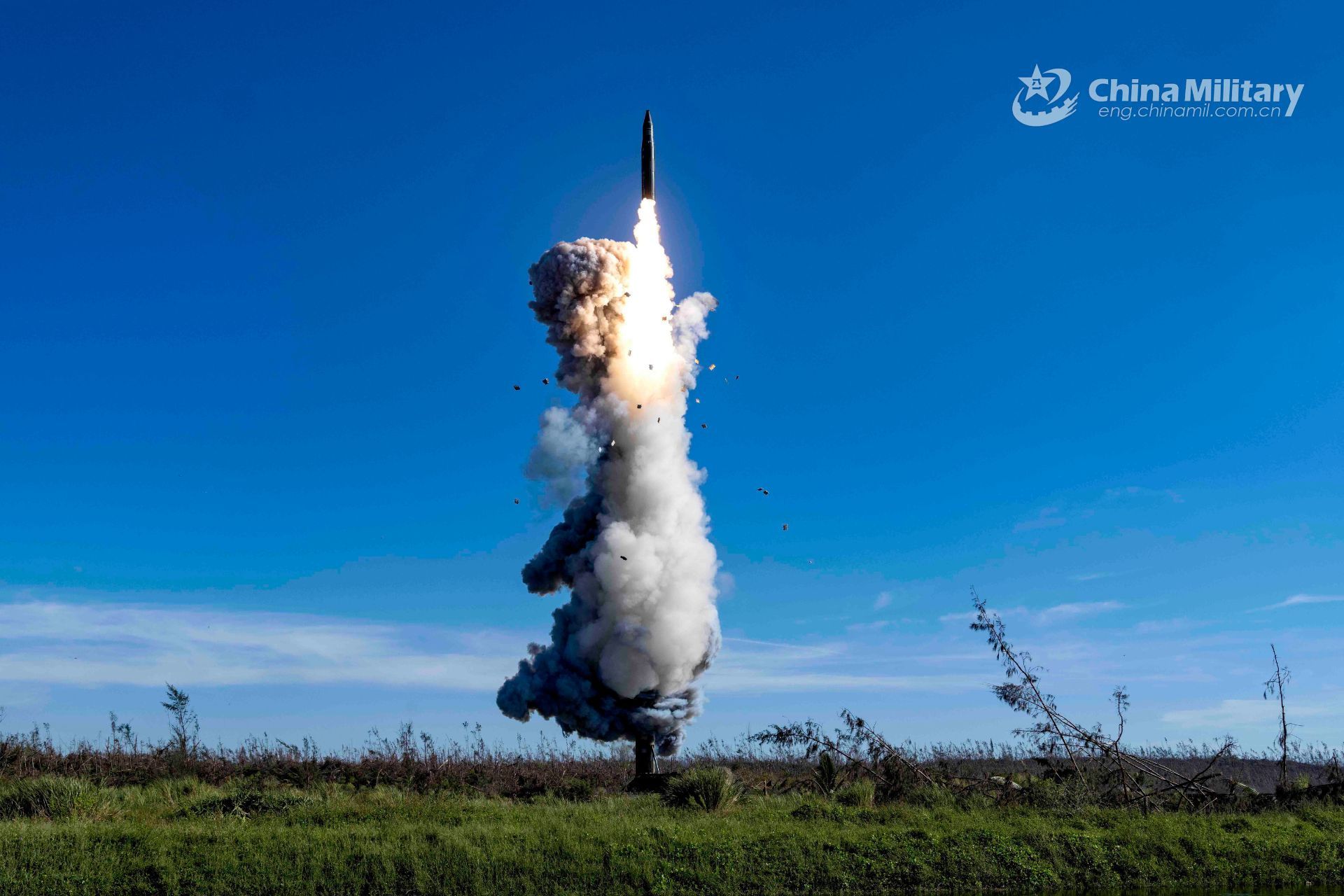Breaking News
Chinese DF-31AG Intercontinental Ballistic Missile Launched from Hainan Island.
On September 25, 2024, China's Ministry of National Defense announced that the People's Liberation Army Rocket Force (PLARF) had conducted a test launch of an intercontinental ballistic missile (ICBM) into the South Pacific. This exercise, described as part of China's annual training plan, drew attention due to its unusual launch site: Hainan Island. The missile, a DF-31AG, traveled an estimated 11,700 km before landing in the Pacific, marking the first time since 1980 that China has targeted this area during an ICBM test. The last such event involved a DF-5 missile launched from the Jiuquan Satellite Launch Center.

An image of the DF-31AG launch was released by the Chinese People's Liberation Army on September 25, 2024 (Picture source: PLA)
The launch has sparked discussions regarding China’s nuclear posture and its advancing military modernization. Navigation warnings and trajectory calculations quickly identified that the missile had been fired from northeast Hainan Island, a location not typically used for ICBM launches and lacking a permanent ICBM brigade. This unusual choice suggests that China used a mobile launcher for the test, likely a DF-31AG, as confirmed by images released shortly after the event. The DF-31AG is a modernized version of the DF-31, China’s first solid-fuel ICBM, introduced in 2017 to replace earlier models. The DF-31AG is mounted on an eight-axle mobile transporter, which offers improved maneuverability and requires less logistical support than previous versions.
The Dong Feng 31 (DF-31), also known as CSS-9 according to NATO classification, is a mobile, long-range ICBM developed by China. This three-stage missile, powered by solid fuel, was designed in the 1980s as a successor to the DF-4. First unveiled during China's National Day Parade in 1999, the DF-31 is housed in a large container mounted on an eight-wheeled trailer, providing significant operational flexibility. With an estimated range of 8,000 to 11,700 kilometers, it can strike targets across much of the continental United States, giving China a second-strike nuclear capability that is difficult to counter. The missile's accuracy is estimated at around 150 meters for mobile launches and 100 meters for silo-based launches.
The DF-31 can carry a single 1-megaton nuclear warhead or multiple independently targetable reentry vehicles (MIRVs), capable of delivering three to four warheads with yields ranging from 20 to 150 kilotons. It uses an inertial navigation system coupled with stellar and GPS updates to improve precision. In terms of mobility, the missile is transported on HY4430 trailers towed by off-road trucks designed to operate in rugged conditions. The DF-31 remains a central component of China's nuclear deterrent, offering rapid strike capabilities and an extended range, making it difficult to neutralize.

An image of the DF-31AG missile driving on Hainan Island shortly after the launch (Picture source: X Channel @Resonant_News)
The DF-31AG used a cold-launch method, where the missile is ejected from its canister using compressed gas before its engine ignites. This method makes it more challenging to geolocate the exact launch site, as there are no burn marks left on the ground. This test is significant for China, which has not conducted an ICBM test in the Pacific for over four decades, typically opting for high-apogee tests within its own borders.
The missile was likely transported from the Shaoyang brigade, about 800 km from Hainan, via rail and sea before being driven to the final launch site. Analysis of images and videos identified a probable launch area near Wenchang, on Hainan Island, which appears to be part of a newly developed military training zone, reinforcing the strategic importance of this location for future observations.
The decision to launch an ICBM from Hainan could serve multiple purposes, such as allowing a full-range test without debris fallout or overflight of other countries. This test may also be part of a broader PLARF strategy to restore credibility following internal issues such as corruption scandals and leadership changes. Furthermore, by conducting this test as part of a military drill rather than a technological development program, China may be aiming to demonstrate combat readiness while reinforcing its status as a global nuclear power.
The Pentagon confirmed it had received prior notice of the launch, which could set a precedent for future risk-reduction communications. It remains to be seen whether China will continue conducting such tests outside its borders and whether it will maintain this policy of pre-launch notifications to relevant states.


























